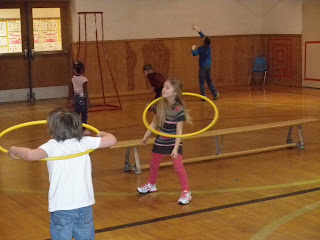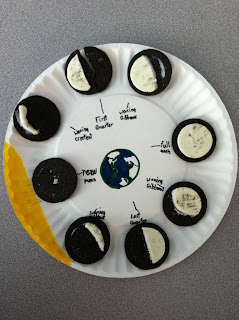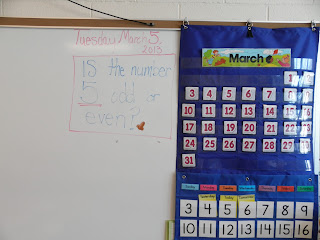Learning Targets--Helping Students Aim for
Understanding in Today's Lesson
By
Connie M. Moss & Susan M. Brookhart
I highly recommend that you read this book. It will really help
your understanding of what Learning Targets are and their
importance.
*I found used copies on Amazon.com-very inexpensive to
purchase ISBN 978-1-4166-1441-8
Chapter 8—Using Learning Targets to
Guide Summative Assessment and Grading
*Student’s grades should be based on
the same learning targets that they have aimed for. It doesn’t make sense to have
students learn on thing and then grade them on something else.
To truly
base summative assessment and grading on the learning targets students actually
worked toward, you need to do two things.
-Design classroom summative assessments to summarize
achievement over a set of learning targets.
-Aggregate the grades from those summative assessments using
a method that will result in a final report card grade that keeps the learning
targets in balance.
*What Should Grades Mean?
Grades are
supposed to communicate student achievement of state standards and curricular
learning goals. Often, grades don’t reflect learning. Many teachers add points
or credits that reflect effort and behavior so that the meaning of the
resulting grade is not clear. Report cards need not report only academic
learning outcomes, but effort and behavior and progress or improvement should
be reported in separate sections, using different symbols from the academic
grades, if desired.
Learning
targets help clarify the grading process. Taking learning targets seriously
leads to a grading philosophy rooted in the following beliefs:
-Academic grades should be based on
achievement of learning goals.
-Effort and behavior should be assessed separately and
handled by working with the student.
*Learning Targets and Grades
Learning
targets are the connection between daily learning and the reportable
achievement of learning goals. Today’s
learning target should build on yesterday’s learning target, and any one
learning target should fit into a learning trajectory that goes on to something
bigger—at some point, something big enough to be reported.
The student’s
report grades should reflect their developing understanding of the learning
targets. From the students’ point of view, the rationale is simple:
-You (the teacher) asked me to learn
these things.
-How well did I do?
(pg 134)From
the teacher’s point of view, the
main points are the same. Below is a list of reasoning that leads from
learning targets to achievement-focused
grading practices.
-I (the teacher) asked you to learn
these things.
-I shared learning targets with you,
in a sequence that makes sense.
-I presented you with learning opportunities and used strong
performances of understanding.
-I gave you feedback on your work
based on the learning targets.
-I gave you opportunities for
self-assessment based on the learning targets.
-After all this, I will assign a
grade that summarizes how well you learned.
-I will design summative assessments that check on your level
of attainment of the learning targets, individually or in clusters that make
sense.
-I will put the grades for these summative assessments
together in such a way that the summary grade is the best indicator of your
achievement level that is possible with the symbol system we use in our school.
-I will communicate additional information (because one
summary grade can’t tell everything) in comments and in conferences with you
and your parents, as needed.
Up to this point, the book has emphasized the reasoning
delineated in the first two bullets. It has described learning targets and
performances of understanding and explained how they are the means by which
teachers design learning tasks for students, students engage in the learning
tasks, and students make sense out of their learning.
But the intent of these learning targets would be nullified
if we didn’t also honor them in summative assessment and grading. In the
following sections, the book provides guidance on how to design summative
assessments that yield grades that are faithful to your students’ learning
targets and how to aggregate those grades into a reportable summary that is, in
turn, faithful to those learning targets.
*Summative Assessments: The “Ingredients”
for Grades
Designing
summative assessments that summarize achievement over a set of learning targets
involves two general principles:
1. For each summative assessment, use a
plan, or blueprint, that faithfully represents the learning goals toward which
the lesson-level learning targets were aimed.
2. Write test items or performance tasks
that elicit the intended performances, and create scoring rubrics that give credit
to all intended aspects of the performances.
*Planning Summative Assessments That
Represent the Learning Goals
In your
instructional planning, you derive unit goals from state standards and
curriculum goals. Then you derive teacher instructional objectives and student
learning targets from those unit goals. You make sure that students are
engaging in strong performances of understanding that focus their work on the
learning target and at the same time yield evidence of student progress toward
the learning target.
For summative assessment,
you reassemble what has been pulled apart for instruction and formative
assessment at a higher level. Summative assessments that faithfully represent
learning goals are analogous to performances of understanding that faithfully
represent learning targets. The unit is larger than the lesson, encompassing
understanding of a set of learning targets or a more complex learning goal
farther along the learning trajectory. But the principle is the same.
Recall back
in chapter 2, how each day’s lesson feeds learning forward toward increasingly
more complex understanding and skills. Like most formative assessment, most
daily performances of understanding focus on small pieces of knowledge or
aspects of skills.
The reason for
this narrower focus is that the main purpose of performances of understanding is
learning—not grading—and understanding these small chunks of knowledge is
necessary to support next steps in learning. In contrast,
summative assessment typically addresses larger chunks of knowledge or more integrated
skills, because the purpose of summative assessment is to ascertain what has
been learned. You could call summative assessments “meta-performances of
understanding.”
To assemble
the chunks students have learned into a valid indicator of integrated knowledge
and skill, you need a plan—typically called an assessment blueprint.
Assessment blueprints are useful for planning both tests and performance
assessments. There are many ways to draw up an assessment blueprint.
Figure 8.1 pg
137 is a template for a
Two-Dimensional Assessment Blueprint
for One Summative Assessment.
Table Headings:
Content Outline- Knowledge- Comprehension- Application- Analysis- Total Pnts- %-
Figure 8.2
pg 138 is a template for a
One-Dimensional Assessment Blueprint
Table Headings:
Outline- Total Pnts- %-
*Writing Test Items and Performance
Tasks that Match Intended Assessment Outcomes
Example of a
Test Blueprint
-The
blueprint contains major decisions about the unit test you will write.
-It allows
you to allocate the relative emphases you want the various learning targets to
have in the test score by using the points and percentage column.
-If the
proportions don’t look right, you can change them while you are still at the
blueprint stage, before you have taken time to write or find good test questions.
A test
blueprint also allows you to allocate the proportions of the test that will tap
various kinds of thinking or cognitive processing, using the points and
percentage rows at the bottom of the blueprint.
*Remember
that the goal is not to fill all of the cells but to appropriately organize the
learning targets for the unit so that you know what you are assessing and can
write questions accordingly.
*Writing the
questions is the next step. For each of the filled-in cells, write or select
questions that are mini-performances of understanding for the content and
cognitive level specified.
*When you
write questions for each of the cells, understand that the purpose of the point
allocation is to have the overall test score reflect the desired emphases. You
would write or select the questions that best sample the knowledge and skills
described by the blueprint.
On page 140,
Table 8.3 shows an example of a test blueprint for 5th grade Unit
Test on Weather.
So try to
visualize this table…
Top Heading is:
Cognitive Level
Under the
Cognitive Level there are 6 other headings each in its own column:
Knowledge;
Comprehension; Application; Analysis; Total Points; %
On the Left
of these 6 headings is the “Content Outline” Column. In this column, under the
Content Outline heading is: Row 1: Atmosphere; Row 2 Air pressure and wind; Row
3 Water vapor and humidity; Row 4 Clouds and precipitation.
Then at the bottom
of the table under the “Content Outline” heading it Total Points and the row
under that is %.
There are
points & % given under each Cognitive Level Heading.
Without
seeing the table you might not understand my description of it so I do apologize.
As I’ve said during each chapter summary, I do recommend the book because there
is so much more in it than I’m able to post.
*Report Card Grades
Report card
grades that accurately summarize achievement over a set of learning goals must
start with a set of ingredients—that is, individual summative assessments that
accurately summarizes achievement of intended learning goals.
Report card
grades that accurately summarize achievement of learning goals must combine the
component grades in ways that maintain the intended meaning about student
achievement.
*Have a
Grading Plan that faithfully represents the set of learning goals on which you
need to report.
On most report
cards, academic achievement is reported in one of two ways: either as a list of
subjects (reading, math, science) or as a list of standards with subjects
(understand and used different skills and strategies to read). In either case,
the subject or standard represents a domain of achievement that is larger than,
but contains, the domain described by the learning targets and assessed with
your summative assessments. The idea is to select, from the choices available
in the grading scale on which achievement is reported, the symbol (usually a number,
letter, or category) that best represents student achievement in that subject
or on that standard. You have information from each of the summative
assessments (the “ingredients” for the report card grade), and your task is to
summarize that information in such a way as to be able to report the best
representation of the student’s achievement.
*If you
summarize the information well, you will see that there is a direct link from
the learning targets to the report card grades. The learning targets were the
basis for learning in classroom lessons, and the performances of understanding
yielded formative assessment information for improvement. At some point, you
took stock of what had been learned with a summative assessment, using a
blueprint that cross referenced the grades on individual assessments with
reporting standards and learning targets. Now, you summarize those individual
assessment grades in ways that maintain your intended balance of information
about student achievement of the content and thinking skills assessed.
*Put Grades on Comparable Scales with
Meaningful Performance Levels
If the
grades from your individual summative assessments are not on the same scale,
the properties of the scales will alter the final information. We call it “arithmetic
injustice” when a teacher puts two scales together whose numbers or levels
behave differently and gets a final result that isn’t what she intended. When
you record your grades, put them all on the same scale. We recommend the
performance scale that matches your reporting scale, if possible. For example,
you might record whether a student is Advanced, Proficient, Basic, or Below
Basic on each summative assessment. Or you might record whether the student’s performance
was at the A, B, C, D, or F level for each summative assessment. If you have a
test that results in a percentage correct (say, 82%) and a project that is
graded with rubrics (perhaps with four 4-point criteria), don’t record these
non-comparable numbers. Instead, translate students’ performance on each into
the same scale, and record those. Then, when you summarize, you’ll be comparing
apples to apples.
Be careful
of how you handle failing grades and zeros. Because the F range in a percentage scale is so much bigger than all of the
other grade ranges, a low grade in one assessment may end up contributing more
to the final grade than the other summative assessment, even if that was not the
intent.
*Combine Grades in a Way That
Maintains the Performance-Level Meaning.
Once you
have all your summative assessment (achievement) grades recorded on the same
scale, it’s time to combine them into a summary grade. A blueprint-like grading
plan is helpful here because it show you how much weight to give each summative
assessment. Use the standards and learning targets to think through the weighting.
Which learning targets are more important? On which learning targets did you spend
more time? Those should carry more weight in the final grade.
After
weighting the individual “ingredient” grades so that they contribute more or
less heavily to the final grade, as you intended, summarize them into one grade
by taking the median of the individual grades. In most circumstances, the
median will be a better representation of typical performance on a standard
than the more familiar mean (sometimes called the “average”).
But don’t
stop there! Remember, your task is not to do a set of calculations on your
class grades. Your task is to select, from the choices available in the grading
scale on which achievement is reported, the symbol that best represents student
achievement in that subject or on that standard. The median grade will be the
best representation for most—but not all—students.
Therefore,
after you have your class list of median grades, do a “judgment review” and
revise the grade in the rare cases when the median is not, in your judgment,
the best representation of student achievement. There are two circumstances
when the median may not be the best representation.
1- When a student’s pattern of
achievement has been on of steady improvement. In that case, privilege recent
evidence. Suppose, for example, that a student began a repot period at Basic
level on a standard, but improved so that h reliably performed at the
Proficient level by the end of the report period. The median grade may be
Basic, but this student’s current status on that standard is Proficient. Use
your judgment, based on the pattern in the achievement evidence, to revise the
grade and assign Proficient.
2- When the grade is right on the
borderline between two categories. Then the question becomes, “In my judgment,
does the higher or lower grade best represent this student’s achievement in the
subject or on the standard?” Use additional achievement evidence to answer that
question. Consider how the student did in the performances of understanding you
observed. Which grade or proficiency level did the student’s work, overall,
reflect? Use your judgment, based on this additional evidence, to assign the
appropriate grade.
LOOKING
FORWARD
This chapter
illustrated how keeping students’ learning targets in mind so that it will lead
to grading decisions that generate meaningful, interpretable grades for
individual summative assessments and report cards. Throughout this book, they
have applied the idea of learning targets to various aspects of formative
assessment, to differentiated instruction to higher-order thinking, and to
grading. Those are the most obvious categories of application. As you pursue
your understanding and use of learning targets you will find they are useful
for every aspect of instruction and assessment.
Chapter 9 is the last chapter.
A Learning Target Theory of Action
and Educational Leadership: Building a Culture of Evidence
As I’ve said each week, this is a great book with a lot of
examples, tables and charts that I’m not including in the post. I highly
recommend that you purchase a copy of the book for further information and
study.
Until next time…
Vicky





































